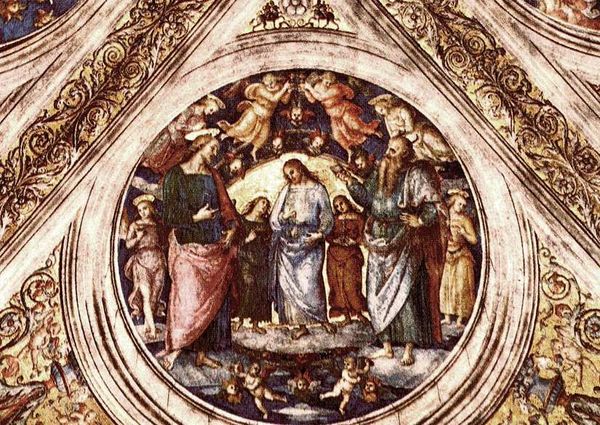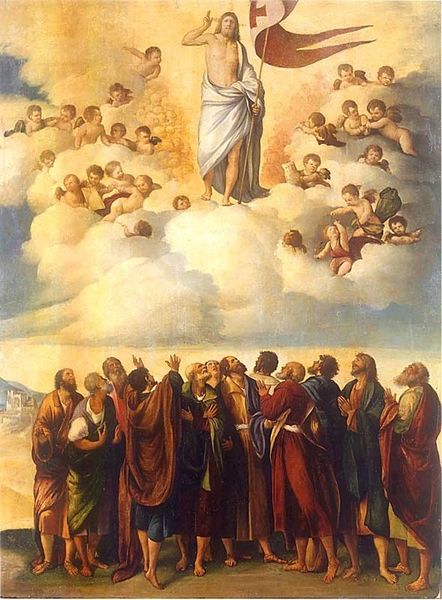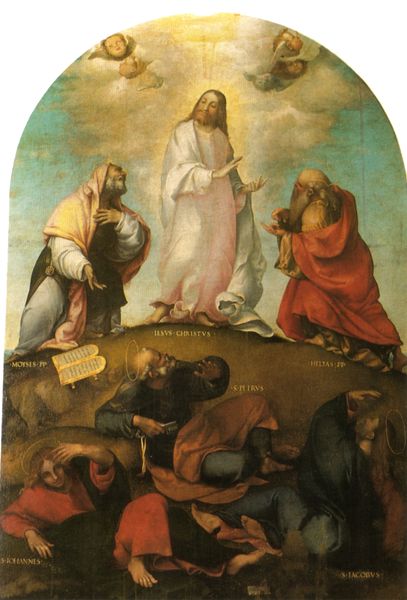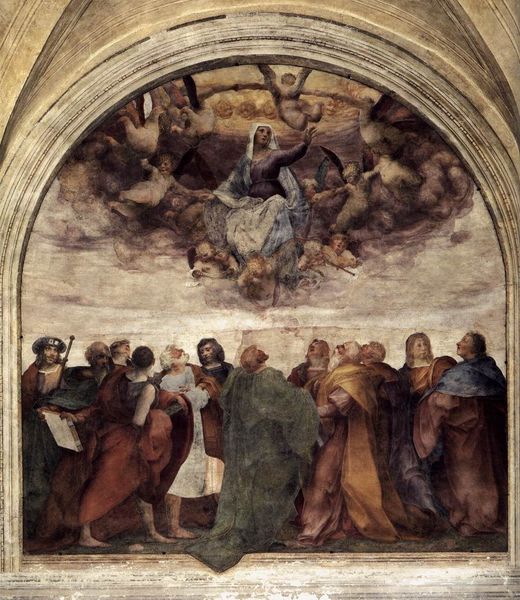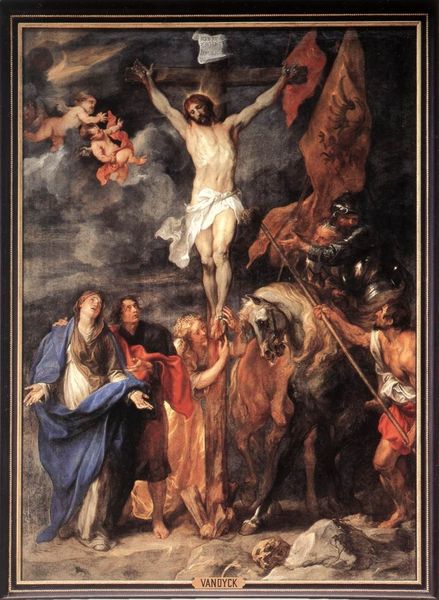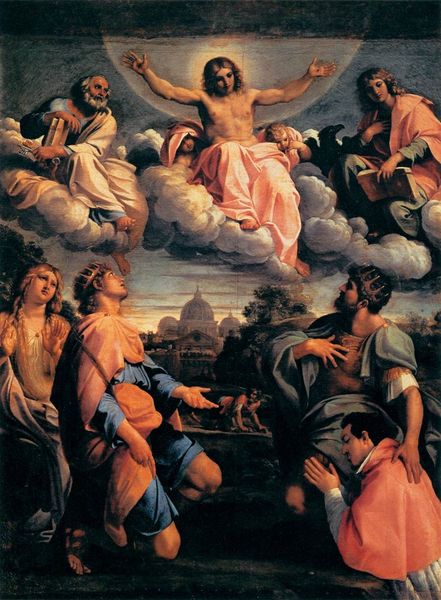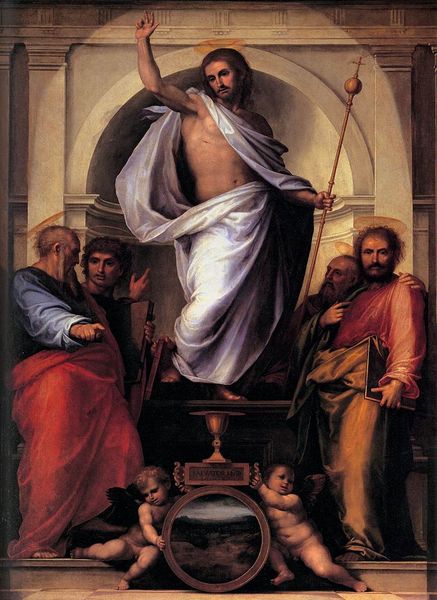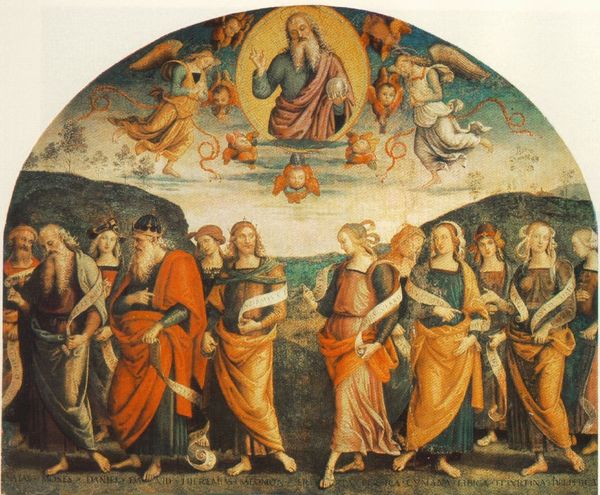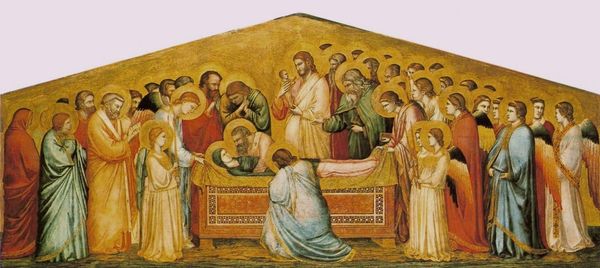
painting, oil-paint
#
portrait
#
narrative-art
#
painting
#
oil-paint
#
perspective
#
figuration
#
oil painting
#
christianity
#
history-painting
#
italian-renaissance
#
early-renaissance
Copyright: Public domain
Editor: We're looking at Perugino's "The Transfiguration," painted around 1498. It's striking how still and balanced everything feels, despite the dramatic subject matter. The figures seem almost suspended in this serene space. What do you see in this piece? Curator: Beyond the obvious narrative, I see a carefully constructed visual language steeped in symbolism. Perugino uses the mandorla, the almond-shaped aureole surrounding Christ, to denote divinity – it’s a visual cue drawn from centuries of religious iconography, instantly recognizable to its audience. The positioning of Moses and Elijah on either side, representing the Law and the Prophets, anchors this event within a broader historical and theological context. Do you notice anything interesting about the positioning of the apostles? Editor: Yes, they seem really…grounded, almost unaware. Their reactions seem individualized too. Curator: Exactly! They're portrayed in various states of bewilderment and awe, serving as relatable figures for the viewer. The psychological impact is powerful: we witness the divine through their human reactions. Perugino invites the faithful to experience this moment personally, connecting with these emotions. Editor: So it's not just about depicting a historical event, but about creating an emotional and psychological space for the viewer. Curator: Precisely! The painting taps into shared cultural memories and beliefs, using recognizable symbols to convey deeper meanings about faith, divinity, and humanity’s place in the divine order. Editor: That makes me see it in a whole new light, like a code of visual cues designed to stir faith and reflection! Thanks! Curator: It's a conversation between the artist, the viewer, and centuries of tradition—one that continues every time someone contemplates the work.
Comments
No comments
Be the first to comment and join the conversation on the ultimate creative platform.


